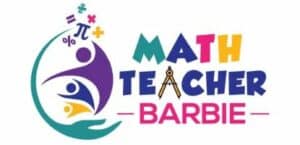
The Common Core State Standards (CCSS) include eight “Mathematical Practices” that teachers and students are encouraged to use throughout their mathematical lives. These are different from the grade-level content standards in a few ways. Firstly, these Mathematical Practices are not grade-specific. Rather, they remain constant practices throughout the child’s education, with the hopes that they become habit. Further, as the words practice and habit imply, these are not mathematical procedures or rules, but are more akin to mindsets and broad strategies.
For a broad look at all eight Math Practices, check out the post What Are the Math Practices and What Do They Have to Do With Me? For a deeper dive into the other seven practices, check out the list at the bottom of this post.
The second CCSS Mathematical Practice is Abstract and Quantitative Reasoning. This is the powerful practice of being able to flexibly move back and forth between the abstract, or decontextualized, representations and the context, or actual quantities (including units of measure) involved.
This second CCSS standard refers to the practice of decontextualizing and contextualizing alternately to solve a problem. Abstracting is another word for decontextualizing, and both refer to the practice of examining the underlying structure and relationships among the pieces of information in the problem and using that structure and those relationships to represent the problem using symbols. In this standard, contextualizing means to consider, or check back in with, the context of the problem periodically throughout the solution process to make sure that the procedures, structure, and relationships remain accurate and sensible within that context.
So, how can we help our children (and even ourselves) reason abstractly and quantitatively at home?

This post was originally published at mathteacherbarbie.com. If you are viewing it somewhere else, you are viewing a stolen copy.
What does it mean to reason abstractly and quantitatively?
A person who has mastered the ability to reason abstractly and quantitatively can move back and forth smoothly between the structure and relationships among various quantities and the sense-making of the quantities themselves, including units of measure. This idealized person can use both the abstract structure and relationships as well as the quantitative context as a sort of checks-and-balances throughout the problem solving process to a) use the efficiency of abstraction and b) Make sense of the problem and answer.
Since it may not be obvious how abstraction creates efficiency, let me explain. When we abstract a set of information to its underlying structure and relationships, we are able to use symbolic manipulation (e.g., make use of our multiplication facts); the more fluent we are with this symbolic manipulation (the better we know our arithmetic facts, and the better we’ve learned how to do various operations, the more efficient this becomes). Abstraction also provides efficiency when we begin to see patterns of structure between problems. When we begin to recognize that one problem is very much like another problem in structure, even though the contexts may be very different. In these cases, by abstracting and making use of that structure, we can begin to develop and use muscle memory to make our problem solving even more efficient.
It is worthwhile here to stop and point out that these Mathematical Practices are exactly what that second word implies: behaviors to practice at and continuously attempt to improve. You can not expect your child to be excellent at these skills right away, just like you can not expect yourself to. These skills grow with practice and use. Meet yourself and your child where you each are with these skills and focus on simply using them however you are able. The growth may happen so slowly you don’t even notice, but with continual use, trust that the growth will indeed happen.
You can not expect your child to be excellent at these skills right away, just like you can not expect yourself to.
What is the difference between quantitative and abstract reasoning?
Quantitative typically refers to reasoning with numbers in context. Here, quantitative reasoning refers to the ability to hold, understand, interpret, make sense of, and even predict numbers in their context, including the units of measure used, a sense of the size and scale of the numbers, and knowledge of what they measure.
Abstract refers to removing the context that surrounds a problem and examining the structure and relationships within the information. Here, abstract reasoning refers to the ability to recognize and discriminate
- when information has a part-part-whole relationship (usually indicates addition or subtraction), an equal-groups relationship (usually indicates multiplication or division), or some other relationship
- when a problem is structurally similar to a different problem from a different context
- how to set up a symbolic representation (usually an equation) of the problem
- what that structure is both with and without the actual numbers
Why is it important to reason abstractly and quantitatively?
Abstract reasoning allows us to solve problems efficiently using patterns and rote fluency skills such as arithmetic facts. It also allows us to solve complicated problems that involve multiple steps, complex relationships, and those which are difficult or otherwise impossible to solve purely quantitatively. Letting go of the quantities and focusing on the relationships allows us to free up brain space to set up symbolic representations that can then be solved using known algorithms, or processes.

However, without quantitative reasoning, the solutions we find have no sense. We continuously revisit the context, including both the actual numbers, the relative sizes of the numbers, the units of measure, and what they measure, to confirm and clarify whether the relationships we’ve abstracted still make sense. We use the context to learn answers to even more questions by interpreting the intermediate steps in context. We evaluate whether the final solution makes sense. We report our answers within context so that the next user of that information (whether it be your teacher, your boss, your colleague, or your reader) can make sense of this new information you generated in its context.
What is an example of quantitative reasoning?
You are using quantitative reasoning any time you
- convert between inches and feet or minutes and hours, etc
- make change or add up totals (especially if you find this easier to do in the context of money than the same arithmetic problems without that context)
- solve a problem using guess-and-check
- ask or consider whether a solution makes sense
- ask the question “what does this number mean”
- focus heavily on the numbers in a problem statement
- evaluate the “bigness” or “smallness” of a number, especially when it includes units of measure
- determine the relationships and structure in a fraction problem by temporarily changing the fractions to whole numbers (note, this uses quantitative strengths as a bridge to abstract reasoning)
How do you reason abstractly?

We don’t necessarily notice when we reason abstractly, and like many things, the line can sometimes blur between these two. However, to grow abstract-reasoning muscles, try the following
- when looking at a number problem, cover up the actual numbers (create a “numberless word problem“). Seriously, just get rid of them for the first little while. Look at the words and the structure and see if you can create an expression or equation that describes the relationships with blanks instead of numbers.
- ask whether the information you are given are parts of a whole (usually indicating addition or subtraction), equal groups (usually indicating multiplication or division), steady growth or decay (often indicating proportional reasoning or a few other relationships), or is there another way you can phrase the relationships between the pieces.
- practice the rote skills that build fluency, such as but not limited to multiplication facts, so that you can feel confident in solving the abstract problem and take advantage of its efficiencies
- use a number line to solve a problem (this can be a bit of a mix of abstract and quantitative reasoning)
- recognize similar structures and solution methods in problems from different contexts
- set up an expression or equation to model a problem
- use models such as arrays, area models, or the like that use the structure of a problem to determine how to solve it
I hope this gives you ideas about how to grow these skills and powerful reasoning abilities for your child and even perhaps yourself. Don’t let the high-level ideals intimidate you. Know that this truly is a process and a continuum of skills. No matter where you are along that continuum, you already have both quantitative and abstract reasoning skills. You use them all the time, but may not recognize them when you do. Every single one of us can continue to grow these skills, and growing both will serve us better and better in our everyday problem solving. Above all, always remember
You’ve Got This!
For a deeper dive into all eight practices, check out the following posts:
MP1: Sense Making and Perseverence
MP3: Constructing and Critiquing Arguments
MP5: Strategically Choosing and Using Tools
